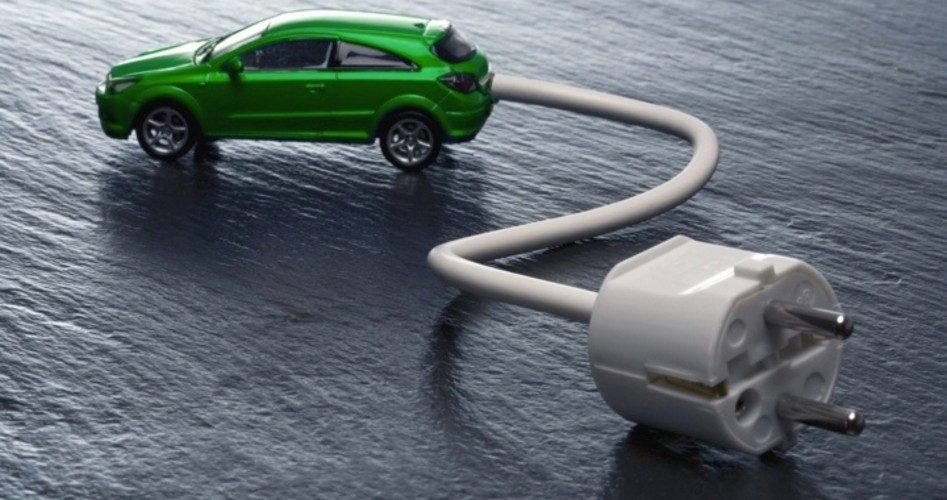
Adding to President Obama’s “all-of-the-above” energy approach to curbing gas prices, the Department of Energy (DOE) announced earlier this week a $5-million initiative “to help expand the use of alternative-fuel vehicles, including electric vehicles (EVs), in cities and towns across the country.” The taxpayer-subsidized funding will finance 10 to 20 projects that “address barriers to the adoption of these vehicles” and “drive market development” to broaden fuel station access for alternative fuel transportation.
“This funding opportunity does not provide for the purchase or installation of vehicles or infrastructure,” the DOE stated. Conversely, the money is intended to “help consumers understand the economic and environmental benefits of alternative fuel vehicles and choose the right vehicle for their needs.” In short, the initiative states:
The Department of Energy’s (DOE) Office of Energy Efficiency and Renewable Energy (EERE) is seeking applications that address and assist in reducing multiple barriers to alternative fuel vehicle adoption and use. Overall, this Funding Opportunity Announcement (FOA), issued on behalf of EERE by the National Energy Technology Laboratory (NETL), aims to decrease the nation’s dependence on petroleum and reduce greenhouse gas emissions by accelerating the deployment of alternative fuels. Efforts should focus only on the alternative fuels defined by the Energy Policy Act of 1992, as amended by the Energy Policy Act of 2005 and further augmented by the Energy Independence and Security Act of 2007.
Expanding the use of energy-efficient vehicles while producing alternative vehicle fuels, the agency claims, will “create and retain jobs, stimulate and support domestic economies, and help protect the environment.” The DOE’s Clean Cities program is focusing on four areas to “help overcome” the obstacles that are now “discouraging” the use of alternative fuel vehicles: 1) Polices, 2) Barrier Reduction, 3) Safety and Training, and 4) Market Development/Outreach.
The department’s push to generate a market for electric and other alternative fuel vehicles is purportedly a component of Obama’s “all-of-the-above” energy strategy to reduce gas prices and ease U.S. dependence on foreign oil. Included in the strategy are a range of government-sponsored tactics, including new developments in natural gas, electric vehicles, advanced combustion engines, and biofuels research.
Furthermore, another approach being pursued by the administration, through the U.S. Agriculture Department, is pressuring the oil industry to assist in making high-ethanol gasoline blends commercially feasible. Agriculture Secretary Tom Vilsack says higher ethanol concentration will “increase America’s energy security and spur additional job creation,” especially in rural areas of the country.
Support from oil companies would be necessary for high-ethanol blends to be commercially viable, experts say, and while the industry claims it is committed to using more ethanol, it opposes the barrage of government mandates currently being imposed on the energy sector. “EPA continues to move forward with its decision to approve the use of 15 percent ethanol (E15) in gasoline, even though testing to date shows this higher concentration would not be fully compatible with much of the dispensing and storage infrastructure at our nation’s gas stations,” the American Petroleum Institute (API) affirmed last Thursday.
Indeed, the problem is that fuel blends loaded with 15-percent ethanol — a five-percent increase from the current 10-percent blend — would spark a severe infrastructure problem, as both gas pumps and car engines would have to be changed. “Adding these fuels into our gasoline supplies could result in damaged equipment, safety problems, and environmental impacts at our gas stations — to say nothing about car engines — and it could even erode support for the nation’s renewable fuels program,” said API downstream group director Bob Greco. “EPA has done an inadequate job of answering the many challenges surrounding E15, in particular dispensing equipment and other infrastructure implications.”
In addition, the President announced in March during a speech at a North Carolina truck manufacturing plant a $1-billion “challenge” to help pave U.S. roadways with more alternative fuel vehicles, by doling out more tax breaks and pouring more money into infrastructure:
To cities and towns all across the country, what we’re going to say is, if you make a commitment to buy more advanced vehicles for your community — whether they run on electricity or biofuels or natural gas — we’ll help you cut through the red tape and build fueling stations nearby. And we’ll offer tax breaks to families that buy these cars, companies that buy alternative fuel trucks like the ones that are made right here at Mount Holly. So we’re going to give communities across the country more of an incentive to make the shift to more energy-efficient cars.
Of course, many critics question the President’s so-called “all-of-the-above” approach, considering his administration has dished out billions of taxpayer dollars to fund costly (and what have ended up to be wasteful) energy projects. Last month, for example, lawmakers questioned the Energy Department about a $529-million federal loan to Fisker Automotive Corp., a troubled auto manufacturer that produces advanced-technology vehicles. Even with a half-billion-dollar loan, the automaker has failed to meet its manufacturing goals, while it has had to slow production and lay off employees.
And despite numerous bankruptcies of taxpayer-subsidized green-tech firms, the administration presses on, dumping billions of dollars more into companies that are now bankrupt, or leaning on the edge of fiscal collapse.


